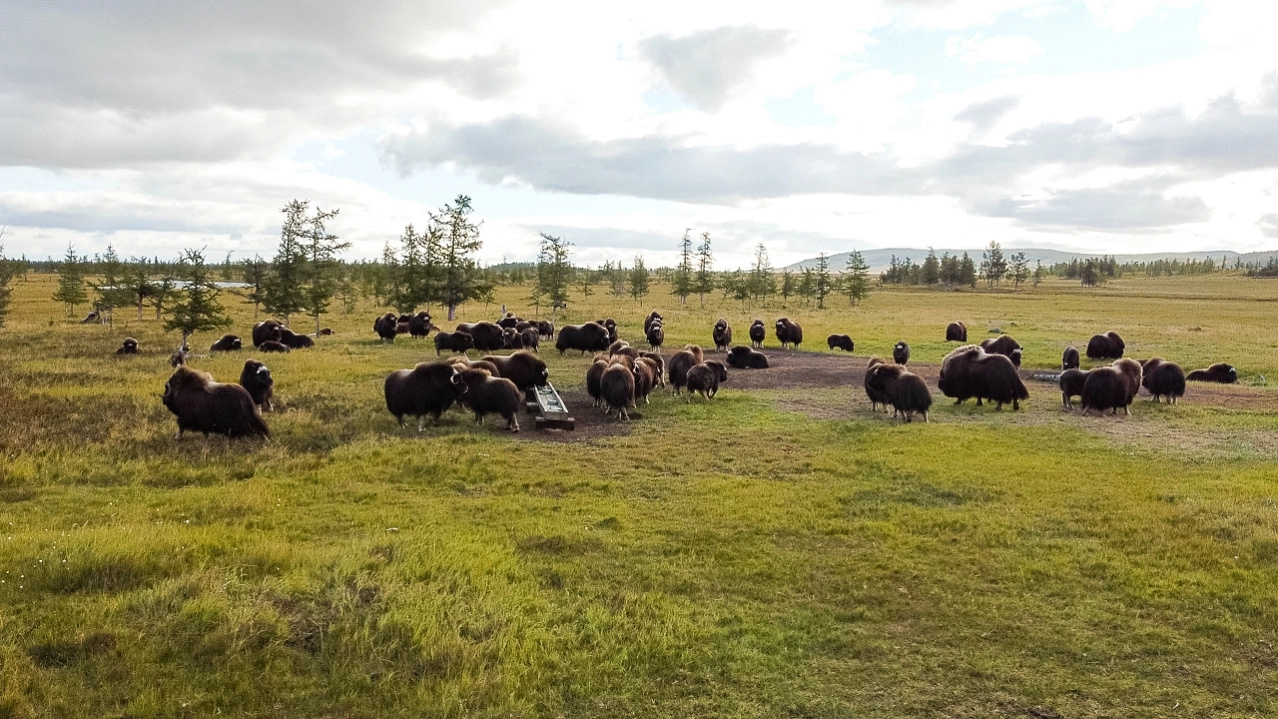
During this stage of the work, scientists will collect material for genetic research, which will help determine the degree of inbreeding in the captive population of animals, assess the degree of current risks, and develop measures to minimize it.
In addition, the work provides for a total aerial census of animals on a territory stretching over 4.6 kilometers of the autonomous region and the adjacent mountainous part of the Komi Republic, using light aviation. This will allow us to estimate the total number of the wild musk ox population and its distribution in the habitat.
“As an experiment, we put a GSM collar on one of the musk oxen. Previously, satellite collars were used, but their service life is much shorter, which made it difficult to get a complete picture of the movement of the musk ox in the district, as well as to identify seasonal habitats and their migration routes,” said Taras Sipko, senior researcher at IEE RAS.
By the end of the year, specialists will prepare a report based on the results of processing the data received and submit it to the district department of natural resources and ecology for subsequent decisions on breeding and resettlement of the musk ox in the district.
